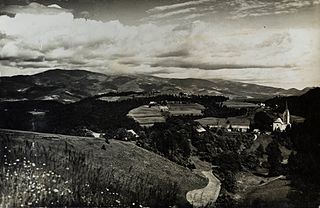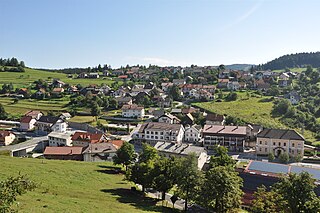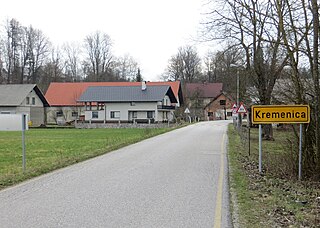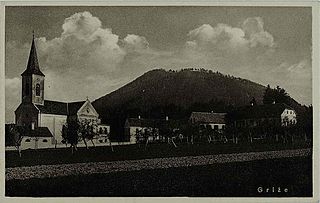| Gotovlje | |
|---|---|
Postcard of Gotovlje | |
| Coordinates: 46°15′42.2″N15°9′5.46″E / 46.261722°N 15.1515167°E Coordinates: 46°15′42.2″N15°9′5.46″E / 46.261722°N 15.1515167°E | |
| Country | |
| Traditional region | Styria |
| Statistical region | Savinja |
| Municipality | Žalec |
| Area | |
| • Total | 8.22 km2 (3.17 sq mi) |
| Elevation | 263.3 m (863.8 ft) |
| Population (2002) | |
| • Total | 1,134 |
| [1] | |
Gotovlje (pronounced [ɡɔˈtoːu̯ljɛ] ) is a settlement in the Municipality of Žalec in east-central Slovenia. The A1 motorway crosses the territory of the settlement north of the village core. The area is part of the traditional region of Styria. The municipality is now included in the Savinja Statistical Region. [2]

A municipality is usually a single administrative division having corporate status and powers of self-government or jurisdiction as granted by national and regional laws to which it is subordinate. It is to be distinguished (usually) from the county, which may encompass rural territory or numerous small communities such as towns, villages and hamlets.

Žalec is a town in central Slovenia. It is the seat of the Municipality of Žalec. It lies in the valley of the lower course of the Savinja River west of Celje. The primary economic activity of the region is growing hops, which is reflected by the city's coat-of-arms. The area was part of the traditional region of Styria. The municipality is now included in the Savinja Statistical Region.

Slovenia, officially the Republic of Slovenia, is a sovereign state located in southern Central Europe at a crossroads of important European cultural and trade routes. It is bordered by Italy to the west, Austria to the north, Hungary to the northeast, Croatia to the southeast, and the Adriatic Sea to the southwest. It covers 20,273 square kilometers (7,827 sq mi) and has a population of 2.07 million. One of the successor states of the former Yugoslavia, Slovenia is a parliamentary republic and a member of the United Nations, of the European Union, and of NATO. The capital and largest city is Ljubljana.
The parish church in the settlement is dedicated to Saint George (Slovene : sveti Jurij) and belongs to the Roman Catholic Diocese of Celje. It is a Gothic building that was restyled in the Baroque in the mid-18th century. The belfry dates to 1907. [3] A second church belonging to the same parish stands in the hills north of the settlement. It is dedicated to Saint Gertrude (Slovene : sveta Jedrt) and dates to the first half of the 16th century. [4]
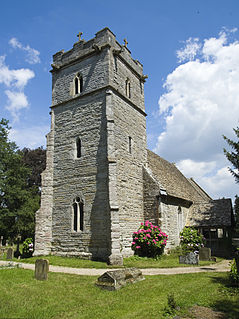
A parish church in Christianity is the church which acts as the religious centre of a parish. In many parts of the world, especially in rural areas, the parish church may play a significant role in community activities, often allowing its premises to be used for non-religious community events. The church building reflects this status, and there is considerable variety in the size and style of parish churches. Many villages in Europe have churches that date back to the Middle Ages, but all periods of architecture are represented.

Saint George was a soldier of Cappadocian Greek and Palestinian origins, member of the Praetorian Guard for Roman emperor Diocletian who was sentenced to death for refusing to recant his Christian faith. He became one of the most venerated saints and megalo-martyrs in Christianity, and was especially venerated as a military saint since the Crusaders.

Slovene or Slovenian belongs to the group of South Slavic languages. It is spoken by approximately 2.5 million speakers worldwide, the majority of whom live in Slovenia. It is the first language of about 2.1 million Slovenian people and is one of the 24 official and working languages of the European Union.






